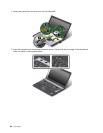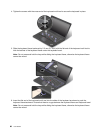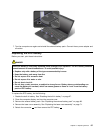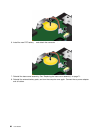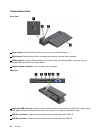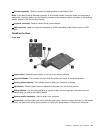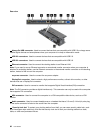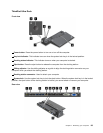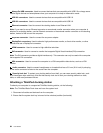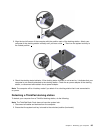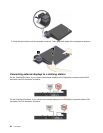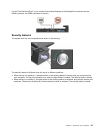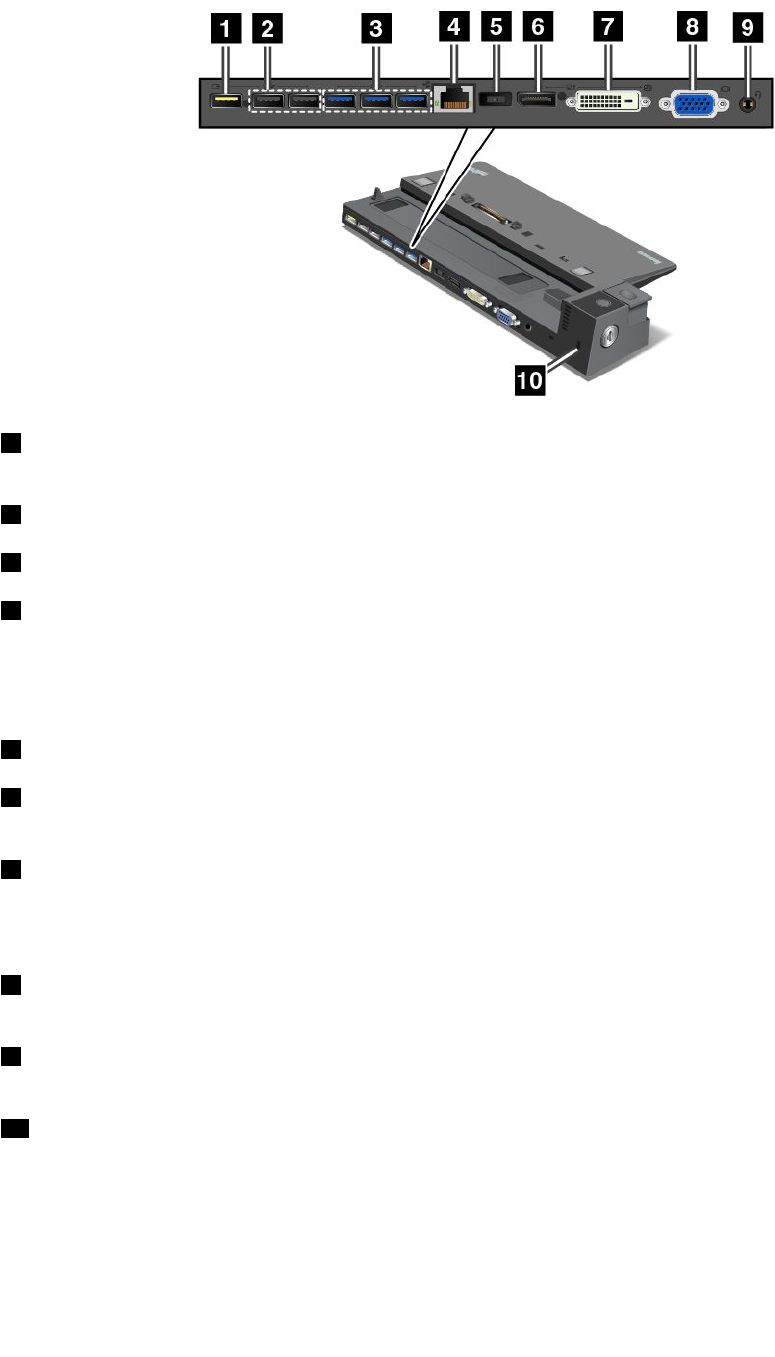
Rear view
1 Always On USB connector: Used to connect devices that are compatible with USB 2.0 or charge some
mobile digital devices and smartphones when your computer is in sleep or hibernation mode.
2 USB 2.0 connectors: Used to connect devices that are compatible with USB 2.0.
3 USB 3.0 connectors: Used to connect devices that are compatible with USB 3.0.
4 Ethernet connector: Used to connect the docking station to an Ethernet LAN.
Note: If you need to use an Ethernet connector or an external monitor connector when your computer is
attached to a docking station, use the Ethernet connector or the external monitor connector on the docking
station, instead of the one on the computer.
5 ac power connector: Used to connect the ac power adapter.
6 DisplayPort connector: Used to attach a high-performance monitor, a direct-drive monitor, or other
devices that use a DisplayPort connector.
7 DVI connector: Used to connect a monitor that supports Digital Visual Interface (DVI) connection.
Note: The DVI connector provides a digital interface only. This connector can only be used with a computer
that supports DVI connection.
8 VGA connector: Used to connect the computer to a VGA-compatible video device, such as a VGA
monitor.
9 Audio connector: Used to connect headphones or a headset that has a 3.5-mm (0.14-inch) 4-pole plug
to the audio connector to listen to the sound from the computer.
10 Security-lock slot: To protect your docking station from theft, you can use a security cable lock, such
as a Kensington-style cable lock, that ts this security-lock slot to lock your docking station to a desk,
table, or other non-permanent xture.
92 User Guide



